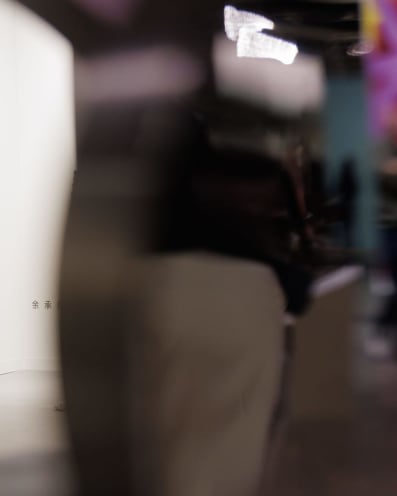
The hidden work behind great art collections
From condition reports to digital preservation, the often-overlooked discipline of cataloging is what allows a collection to grow, evolve, and gain meaning

The hidden work behind great art collections
From condition reports to digital preservation, the often-overlooked discipline of cataloging is what allows a collection to grow, evolve, and gain meaning

The hidden work behind great art collections
From condition reports to digital preservation, the often-overlooked discipline of cataloging is what allows a collection to grow, evolve, and gain meaning

The hidden work behind great art collections
From condition reports to digital preservation, the often-overlooked discipline of cataloging is what allows a collection to grow, evolve, and gain meaning

The hidden work behind great art collections
From condition reports to digital preservation, the often-overlooked discipline of cataloging is what allows a collection to grow, evolve, and gain meaning
When does someone who buys art become a ‘collector’? For many, it starts with a single impulsive purchase – a chance discovery on a first visit to Art Basel, or something to decorate a new home. For others, the collecting impulse arrives via inheritance. (The Art Basel & UBS Survey of Global Collecting 2025 found that 84% of the high-net-worth collectors surveyed had inherited artworks – underscoring how family traditions often seed collections.) However the journey begins, the practical work of how to catalog and curate a collection is something that can be overlooked amid the excitement of those first purchases.
The UBS Art Advisory team provides impartial advice across the whole life cycle of collecting, from building and caring for a collection through to succession planning. And the first step is surprisingly simple: ‘Number one is actually knowing what you have,’ says Matthew Newton, Head of Art Advisory Americas at UBS. ‘For many budding collectors – and even some very advanced collectors – they’re buying art and not thinking about cataloging at all. They’re thinking about bringing the work home and its physical placement.’ It is often not until years later, that the need for a proper inventory becomes clear – whether for an insurance renewal, a museum loan request, or passing works of art onto future generations of the family.
So right from the start, saving a record of the transaction is critical, as is obtaining a condition report, particularly when buying at auction. ‘One thing that surprises a lot of new collectors is just how caveat emptor the art market is,’ says Newton. ‘You have to be able to ask questions around the condition of the work.’ Newton often encourages clients to hire an independent conservator, to ensure that any condition report is aligned with the buyer’s best interests: ‘You can have two artworks – same artist, same year, same quality – and if you have a condition problem, this can dramatically alter the value.’
Digital-based works pose specific challenges, including planning for tech-obsolescence. Hard drives can fail and software changes, so it is important to log file formats and where they are stored, and to know who is responsible for updates. ‘Everything degrades over time – technology just adds another layer,’ says Newton.
For small collections, keeping track of key inventory information can be done with something as simple as an Excel sheet. But as collections grow – and for those shipping works or loaning to institutions – having a robust collection-management system is essential. A new wave of tools actively track market and museum activity. They monitor sales and exhibitions, flag valuation shifts, and surface loan opportunities – creating a living picture of a collection’s value and relevance.
‘A good management system is the lifeblood of a collection,’ says Newton, ‘it opens up so many possibilities.’ So, while cataloging may seem like a chore to some, it can become the foundation for the more romantic side of collecting: curating.
‘Curating means that you’re not just accumulating pieces,’ says Carola Wiese, also an advisor at UBS, ‘but buying corresponding works – pieces that are communicating with one another.’ In a well-curated collection, Wiese notes, there is an underlying thread that ties things together, whether that be technique, timeline, or a narrative theme. ‘Pieces from different eras and regions can feel like best friends – or like relatives speaking around a big table,’ says Wiese. ‘That, to me, is a well-curated collection.’
In the beginning, it is unlikely that a new collector has a grand plan or a clear picture of what their collection may look like in 20 years. How a collection develops is strongly linked to the identity of the collector, says Eric Landolt, the head of UBS’s art advisory department in Switzerland: ‘The spirit of a collection – when someone truly has a passion for collecting – is deeply rooted in the individual’s personality. It intuitively brings certain traits to the surface – and from there, a narrative reveals itself.’ The focus then becomes about finding the pieces that will enhance the collection, perhaps adding to a narrative or closing a gap.
For some seasoned collectors, it will always remain a private passion; for others, collection management and curation progress to institutional levels. Even without a public space of their own, leading collectors can have a profound impact. They acquire and lend works that museums cannot afford, fill gaps in public collections, and join acquisition boards.
Many museums rely on the eye – and generosity – of a collector to fund new acquisitions. ‘Collectors can really move the needle with what they are doing,’ says Wiese. ‘This is what makes them so important – and even thought leaders. They can help to shape the narrative of institutions on a global scale.’
One of the defining shifts in collections over the last decade has been the integration of under-recognized artists – particularly women – often through the combined efforts of institutions, galleries, and collectors.
In 2022, two Venice shows – Peggy Guggenheim Collection’s ‘Surrealism and Magic: Enchanted Modernity’ and Cecilia Alemani’s Biennale exhibition ‘The Milk of Dreams’ – moved the dial for recognition of female Surrealists such as Leonora Carrington, Remedios Varo, and Dorothea Tanning.
Seminal artists working today, whose careers unfolded largely outside the spotlight, are also now broader institutional and market attention. Examples include the 91-year-old British painter Rose Wylie, who will have a solo exhibition at the Royal Academy, London, in early 2026; 82-year-old American artist Howardena Pindell, who had her first major survey at the Museum of Contemporary Art Chicago in 2018; and the 85-year old painter Martha Jungwirth.
Jungwirth's work has long been admired in her native Austria, where she first gained recognition in the late 1960s, but only in the last few years – through the work of her gallery, Thaddaeus Ropac, and through exhibitions such as her 2024 retrospective at the Guggenheim Museum Bilbao – has it gained wider prominence.
Hella Pohl is an international director at Ropac and artist liaison for Jungwirth. ‘A gallery can’t “make” an artist; it’s the quality of the art that makes the artist,ʼ says Pohl. ‘Our role is to make that quality more visible.’
For Pohl, one of the most effective ways to do that is through tightly focused solo shows. ‘A first presentation shouldn’t necessarily be a general overview,’ she says. ‘It should be specific to a period or a series, so the curatorial point is clear.’
When Ropac first presented Jungwirth, they chose to lead with new paintings rather than historical pieces. ‘Martha paints every day. At this stage she’s incredibly free – unencumbered by the constraints younger artists often face – and the urgency is in what she’s making now. We want collectors to meet the artist as they are.’
From this entry point, the conversation then widens to other elements of her practice. ‘I want collectors to feel they can build a deep collection across different facets of Martha’s work,’ Pohl says. For Jungwirth, that can mean watercolor and oil on paper mounted on canvas, spanning a series that draw on art history, politics, or the personal.
Introducing the work to museum collections is also key. Following Jungwirth’s retrospective, the Guggenheim announced the acquisition of two works: Australidelphia (2020), a six-meter-wide oil on paper, and a self-portrait in watercolor from the early 1980s.
‘It’s so exciting to see how curators and collectors are retelling the story of art and bringing under-recognized artists into view,’ says Wiese. Female collectors, in particular, are leading the way in redressing the balance: this yearʼs Survey of Global Collecting found that women bought more – and spent more on – works by unknown artists and female artists in 2025.
The quiet work of curation expands what a collection can be and does – and at its best, can reframe and expand the art-historical canon.
Download The Art Basel and UBS Survey of Global Collecting 2025 here.
Toby Skeggs is a writer and editor specializing in the art market.
Caption for header image: View of Liang Gallery's booth at Art Basel Hong Kong 2025.
Published on November 26, 2025.



